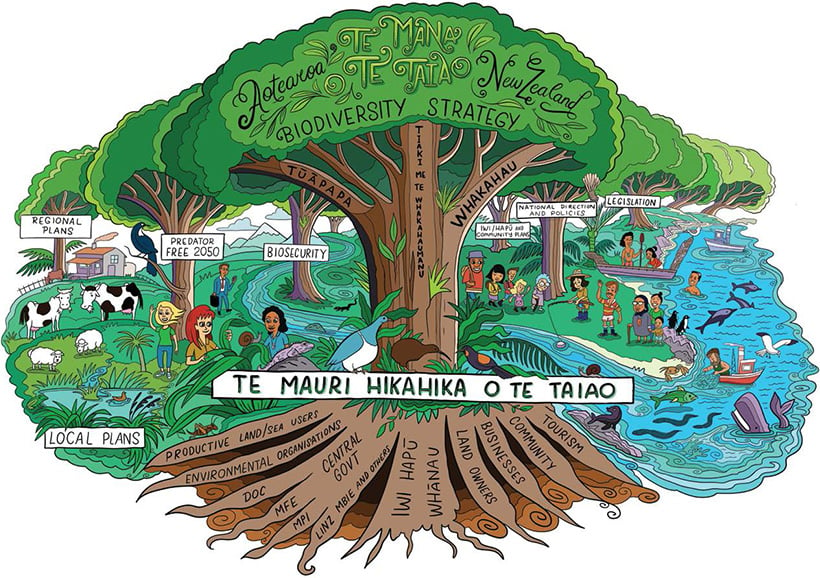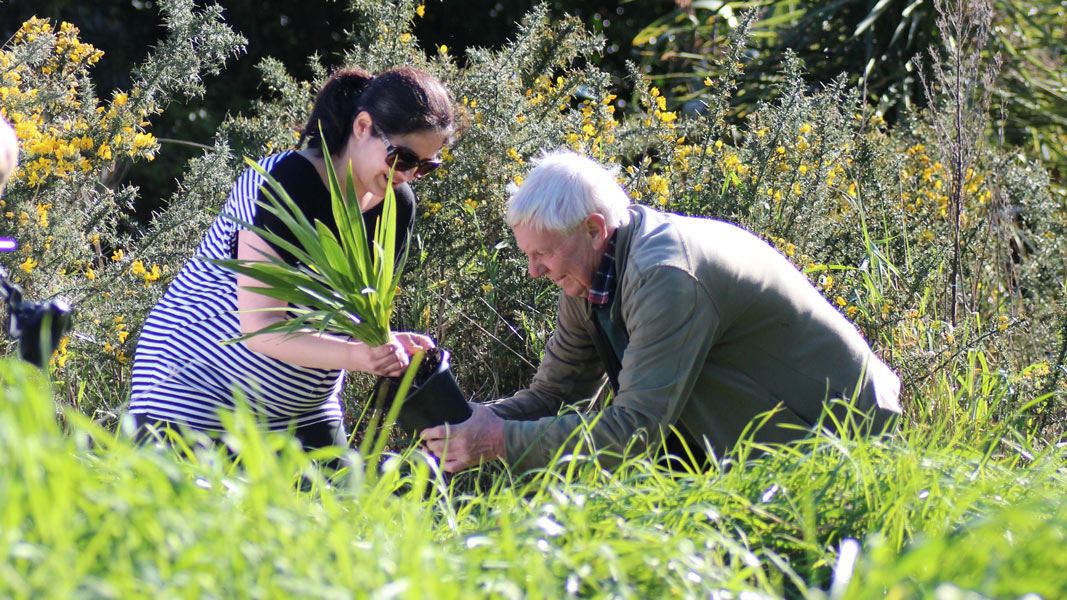Te Mana o te Taiao – Aotearoa New Zealand Biodiversity Strategy 2020 (ANZBS) is a roadmap driving conservation action happening at a national, regional and local level. This is to address pressures on nature, such as:
- climate change
- invasive species
- exploitation of species
- the way we use our land and sea
- pollution.
The government ensures that New Zealand supports the strategy by developing implementation plans and monitoring actions.
Read the strategy and its summary
Read the summary of the strategy
Te Mana o te Taiao - ANZBS 2020 Summary in English
Te Mana o te Taiao - ANZBS 2020 Summary in te reo Māori
Download the full strategy
Te Mana o te Taiao - ANZBS 2020 in English (PDF, 2,881K)
Te Mana o te Taiao - ANZBS 2020 in te reo Māori (PDF, 2,665K)
About the strategy
Why we need a strategy
Nature is in trouble.
New Zealand has one of the highest proportions of threatened species and one of the highest extinction rates in the world. Despite all we are doing to try to protect and restore habitats and assist species, nearly 4000 native species are either at risk or threatened with extinction.
Our native plants and animals are unique because many are found nowhere else in the world.
Have a look at the evidence base for the strategy by reading the Biodiversity in Aotearoa report (PDF, 5, 940K) summarising the state, trends and pressures of New Zealand’s biodiversity in 2020.
The Environment Aotearoa 2022 | MFE and Stats NZ gives an overview of the state of our environment across all domains.
Taking action
Nature benefits us in many ways. Clean air and water, the food we grow, catch or hunt, and our tourism and primary industries all depend on nature. It's part of our identity.
Although we’re already successfully taking action to protect and restore nature, there is still a lot of work to do. It’s going to take both collective and individual actions to protect our precious biodiversity.
The strategy helps us to expand and build on the strong foundation we have all laid to allow our natural world, and the people in it, to thrive.
A shared vision for biodiversity actions
The strategy includes national goals and outcomes for the protection, restoration and sustainable use of biodiversity, particularly indigenous biodiversity. DOC leads the strategy and its implementation for New Zealand.
It sets out five outcomes to be achieved by 2050:
- Ecosystems and species from mountain tops to ocean depths are thriving.
- Indigenous species and their habitats, across New Zealand and beyond, are thriving.
- People’s lives are enriched through their connection with nature.
- Treaty partners, whānau, hapū and iwi are exercising their full role as rangatira and kaitiaki.
- Prosperity is linked with a thriving biodiversity.
A strategy for all New Zealanders
The strategy gives all New Zealanders a shared pathway to address the biodiversity crisis.
It was built on the advice and ideas of Treaty partners, whānau, hapū, iwi, Māori organisations, communities, individuals, stakeholders, non-governmental organisations, industry organisations, and central and local government. They’re all vital to its success.
Upholding the principles of the Treaty of Waitangi is an important part of the strategy. Working together in partnership towards a shared vision for nature will ensure that rangatira (chief) and kaitiaki (guardian) obligations are supported and enabled, and mātauranga Māori is actively protected.
Learn about the Principles of the Treaty of Waitangi and DOC.

The strategy is owned by all New Zealanders. There's a place for everyone to be involved, no matter how big or small their contribution. Download image (JPG, 293K).
Implementing the strategy
The strategy sets a direction towards finding better ways of working together to look after nature. It also needs to set out a pathway for how the goals and objectives can be met and who will be working on them.
Read more about how we’re implementing the strategy.
Global action
The United Nations Convention on Biological Diversity (CBD) is an international agreement that promotes the development of global targets, national strategies, and action plans by countries for the protection, restoration and sustainable use of biodiversity.
As a party to the CBD, New Zealand is required to have a national biodiversity strategy and an action plan.
Learn about our international commitments to the Convention on Biological Diversity.
